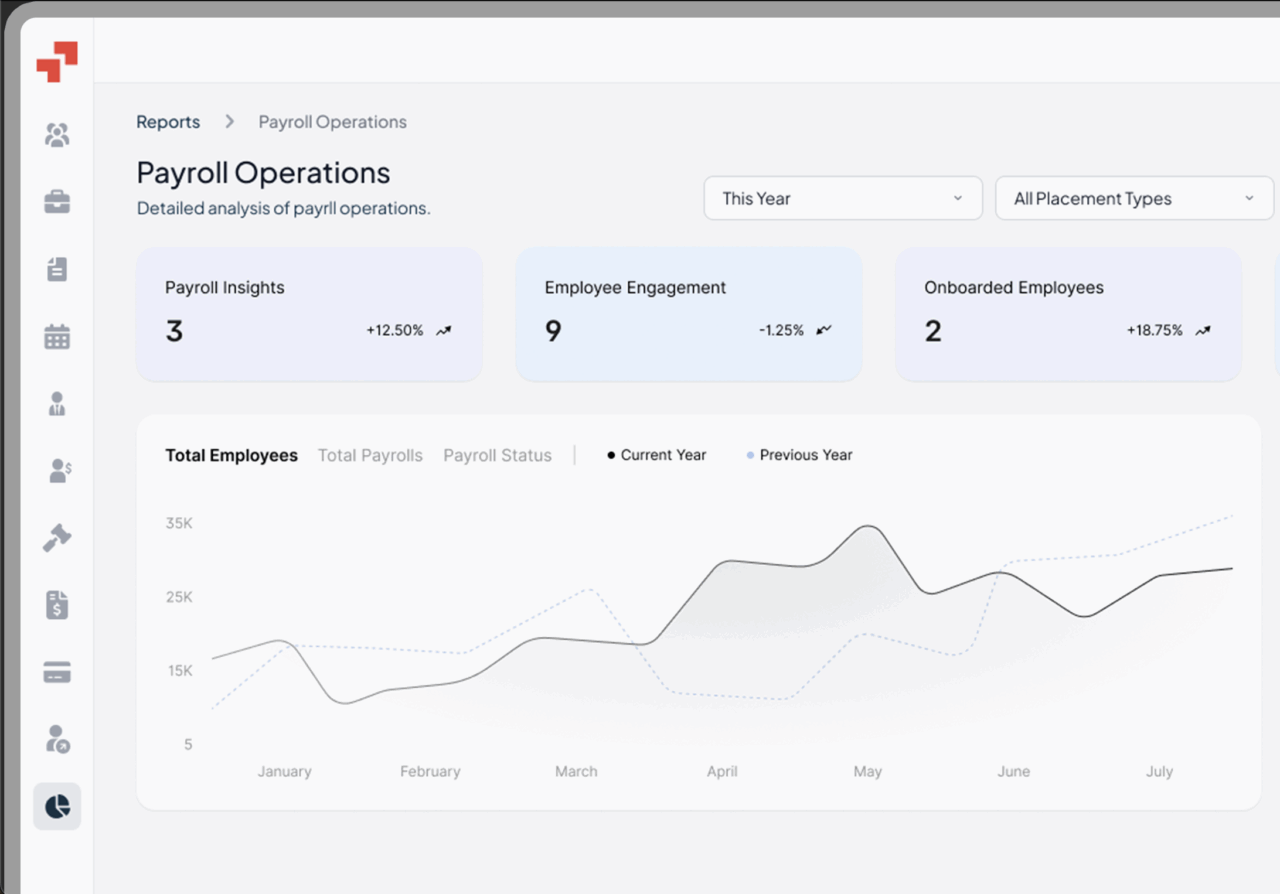Global Workforce GlossaryDiscretionary Time Off
Related Terms
Floating Holiday
Tax Identification Number
W2 Employee
Holiday Pay
Form I-9
What does discretionary time off (DTO) mean?
DTO is a flexible leave policy that allows employees flexibility in managing their time off, enabling them to take leave at their discretion, without fixed limits, while meeting performance expectations.
DTO allows employees to manage their own time and take leave as needed, giving employees the autonomy to decide when to take time off. It emphasises trust, results over hours, and managerial approval. Employees may be required to provide advanced notice when requesting time off to help with planning and workload coverage.
An approval process is typically required to ensure business needs are met and to maintain fairness and consistency. DTO policies are often designed to simplify leave administration, reduce accrual tracking, and foster employee autonomy across global teams.
Table of Contents
- What does discretionary time off (DTO) mean?
- What is discretionary paid time off?
- What is the difference between Discretionary Time Off (DTO) and Paid Time Off (PTO)?
- How is discretionary time off different from unlimited PTO?
- What are examples of discretionary time off?
- What are the benefits of discretionary time off for employees and employers?
- What are the drawbacks of discretionary time off for employers?
- Is discretionary time off paid?
- Who can use discretionary time off?
- Example Scenario
- FAQs
What is discretionary paid time off?
Discretionary Paid Time Off (DTO-P) combines the flexibility of discretionary leave with guaranteed compensation. Employees can request time off as needed, with managers approving based on operational requirements. Unlike traditional PTO, DTO-P does not require employees to accrue a fixed number of days or hours, giving organizations flexibility to manage headcount and cash flow.
While DTO-P offers flexibility, it is distinct from unlimited paid time off policies, which may allow employees to take time off without a fixed number of days and often have fewer approval requirements.
What is the difference between Discretionary Time Off (DTO) and Paid Time Off (PTO)?
PTO typically has a set allocation (e.g., 20 days/year), requires detailed tracking of leave balances and accrued time, and accrues over time. DTO provides leave flexibility without pre-defined limits and does not require employees to accumulate hours or days before taking leave, subject to managerial approval.
While PTO is structured and predictable for budgeting, DTO prioritises results over hours, simplifying administrative overhead and reducing the need for detailed tracking, but requiring clear guidelines to avoid misuse.
Sick leave and other types of employee leave may be managed separately from DTO and PTO policies, often with specific legal requirements and compliance considerations.
How is discretionary time off different from unlimited PTO?
Unlimited PTO policies allow employees to request unlimited time off without strict limits, while DTO emphasizes discretion and manager approval. DTO may still set recommended guidelines or strict limits on consecutive days or weeks off to ensure business continuity, even though employees can request unlimited time off.
DTO may include internal guidelines to ensure operational continuity, whereas unlimited PTO relies heavily on employee judgment and discretion. According to Harvard Business Review, DTO is often better suited to regulated environments where compliance and coverage are critical.
What are examples of discretionary time off?
Common DTO examples include: personal days for family emergencies, mental health breaks, professional development days, spontaneous vacation requests, personal leave for personal matters or personal reasons, family leave, and sick days.
Employees choose when to take leave within policy boundaries, allowing organisations to support work-life balance while maintaining productivity and compliance.
DTO encourages personal leave and promotes work life balance by allowing employees to address personal needs and personal life events as they arise.
What are the benefits of discretionary time off for employees and employers?
For employees, DTO supports employee well-being and job satisfaction by increasing autonomy, reducing burnout, and enhancing engagement. For employers, it simplifies leave tracking, boosts retention, and signals a culture of trust.
DTO boosts job satisfaction and can enhance employee satisfaction, leading to increased job satisfaction and helping organizations retain talent. Companies using DTO often see higher productivity, reduced administrative costs, and improved employer branding in competitive talent markets.
What are the drawbacks of discretionary time off for employers?
DTO can create operational unpredictability, inconsistent usage among teams, and potential abuse if guidelines are unclear. HR teams play a key role in balancing requests and ensuring workload cover to maintain continuous productivity.
DTO policies must be properly managed and require some administrative oversight to prevent misuse and ensure they are managed properly. Legal risk exists if leave is mismanaged or denied inconsistently, particularly in multi-jurisdictional teams.
Is discretionary time off paid?
DTO can be paid or unpaid depending on policy design. It is important to note that discretionary time off (DTO) is separate from mandatory leave types such as parental leave, which are governed by legal requirements and must be provided regardless of company policy.
Most organizations implement DTO-P (paid) to maintain competitive compensation and employee satisfaction. Paid DTO requires careful planning for budgeting, accrual accounting, and alignment with local employment laws, while also ensuring that business operations continue smoothly to maintain productivity and compliance.
Who can use discretionary time off?
DTO is generally offered to full-time, salaried employees and senior professionals. Some companies extend it to global teams where compliance allows flexible arrangements. Eligibility is typically defined by employment type, tenure, and operational role to balance fairness with business needs.
Offering DTO can also help attract job seekers and potential employees who value flexibility and mutual respect in the workplace.
Example Scenario
Many tech companies have pioneered implementing discretionary time policies.
A US-based SaaS company with 200 employees in the US, UK, and Germany implements DTO-P. Employees submit requests via a centralised system. A UK engineer takes three discretionary days to attend a family event; a German designer uses DTO for mental health recovery. Managers approve based on project deadlines.
HR professionals play a key role in managing and tracking employee leaves, ensuring clear communication and adherence to policy guidelines. The finance team tracks paid days to align with payroll budgets. Over six months, employee engagement scores rise 15%, PTO admin time drops 40%, and operational continuity remains intact, proving DTO-P’s strategic value in global teams.
This is an example of successful discretionary time implementation, where unused leave is not paid out when an employee leaves the company.
FAQ’s
What should be included in a discretionary time off policy?
A DTO policy should define eligibility, approval processes, blackout periods, communication standards, and legal disclaimers. Clear communication is essential so employees understand the policy, expectations, and procedures.
It should clarify paid/unpaid status, manager responsibilities, whether prior approval is required for certain types of leave, and how leave impacts benefits, ensuring consistency across locations (HMRC).
How can companies manage discretionary time off requests effectively?
Managing employee leave effectively requires clear processes. Use centralized request systems, clear approval workflows, and visibility dashboards. Companies should gather feedback from employees and managers to improve DTO processes.
Train managers to evaluate requests based on workload and fairness. Organizations may require employees to provide advance notice for planned leave. Regularly review patterns to ensure operational continuity while maintaining employee trust.
Is discretionary time off the same as unlimited PTO?
No. DTO emphasises managerial discretion and operational oversight. Unlimited PTO removes numeric limits but requires high trust and culture alignment. DTO allows controlled flexibility, often preferable for compliance-sensitive or multinational teams.
Hire the Best Talent, Anywhere






